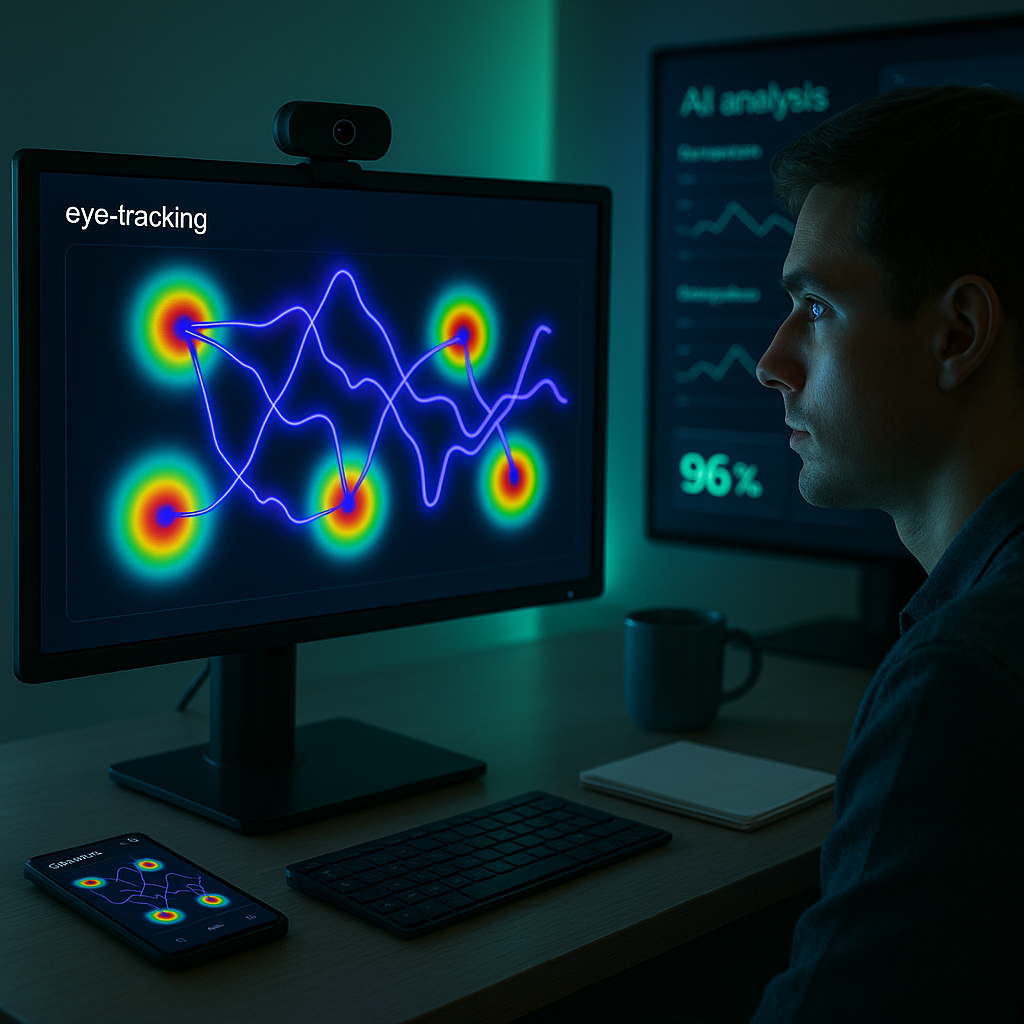Key Takeaways
-
Neurodivergent leadership, especially the distinct strengths of ADHD minds, is swiftly proving to be a secret weapon for forward-thinking organizations across industries. Rather than viewing differences as obstacles to “fix,” embracing ADHD-driven approaches can fuel innovation, resilience, and sustained competitive advantage amid rapid change. Learn how identifying, leveraging, and celebrating neurodivergent traits can transform your leadership style and open doors to new business possibilities.
-
Transforming hyperfocus into strategic momentum: ADHD leaders excel by channeling their intense, rapid focus into focused problem-solving sprints, driving projects forward with a level of energy and passion rarely found in conventional environments. In fields ranging from technology startups to healthcare administration and retail operations, this turbocharged momentum accelerates progress where others may stall.
-
Turning divergent thinking into everyday innovation: Non-linear problem-solving and outside-the-box ideation provide organizations with a creative engine capable of rapidly generating unconventional solutions. In finance, for example, this trait enables the design of novel products for shifting market needs. In education, it fuels the development of adaptive learning pathways.
-
Dynamic adaptability as the new standard in shifting markets: Neurodivergent leaders thrive in environments of uncertainty, using improvisation and resilience to quickly pivot strategies. Legal and compliance teams benefit from this agility during regulatory changes, while environmental organizations find it essential for tackling unpredictable climate challenges.
-
Leveraging emotional intuition for authentic team culture: Empathy grounded in lived experience fosters inclusive, supportive workplaces. This helps attract and retain top talent across sectors like creative industries, marketing, and even technical teams who increasingly value authenticity, diversity, and psychological safety.
-
Redefining productivity with a focus on meaningful impact: ADHD-driven leadership prioritizes high-value outcomes over administrative “busywork.” In healthcare, this means more time spent on patient outcomes. In retail, it translates to improved customer experiences rather than getting stuck in repetitive, low-impact tasks.
-
Sustainable edge through authenticity, not assimilation: Companies achieve lasting advantage by championing leaders with diverse backgrounds, perspectives, and working styles, rather than pressuring neurodivergent professionals to fit a mold. This shift not only uplifts individuals, but also drives outperformance in teams and organizations.
When neurodivergence is reframed from “deficit” to dynamic advantage, ADHD leaders are empowered to produce extraordinary results, energize teams, and future-proof business strategy. Read on for real-world frameworks, inspiring success stories, and actionable tools that will help you convert neurodivergent difference into rocket fuel for business growth across any industry.
Introduction
The outdated myth that only traditional thinkers make effective leaders is quickly losing ground. In reality, some of today’s most dynamic business breakthroughs are sparked by the bold, unconventional strengths inherent in neurodivergent leadership. Entrepreneurs and professionals with ADHD are showing that traits once labeled as obstacles (such as hyperactivity or distractibility) can be the very engines driving innovation, fast-paced problem-solving, and authentic team cultures.
This shift toward embracing ADHD business strengths fundamentally rewrites the rules of management and leadership. With a focus on divergent thinking, emotional sensitivity, and dynamic adaptability across diverse sectors, leaders can set a pace and standard that leaves competitors trailing. By reframing your business philosophy through the lens of neurodiversity, you’ll find not only greater inclusivity but also a catalyst for extraordinary business results and long-term success in today’s world, where standing out is far more valuable than blending in.
The Neurodivergent Advantage: Understanding ADHD as a Business Superpower
Before delving into practical strategies, it’s helpful to clarify how specific ADHD traits translate into business advantages across industries.
Reframing ADHD Traits in Business Context
Hyperfocus, when directed intentionally, becomes a formidable resource for completing projects and driving innovation. Leaders like Sarah Merrick, founder of Ripple Energy, harnessed their ability to concentrate deeply for extended periods to disrupt fields like renewable energy, overcoming structural barriers and unlocking millions in investment. This deep focus is equally advantageous in fields like law, enabling complex case analysis, or in healthcare, facilitating breakthrough research in short windows of intense concentration.
Creative problem-solving, often misunderstood as scattered thinking, actually reveals the kind of cognitive flexibility required to change industries. Harvard Business Review studies show that teams led by neurodivergent professionals are significantly more likely to develop innovative solutions. In marketing agencies, this means developing campaigns that break through noise. In education, it inspires fresh approaches to engaging diverse learners.
The energetic, act-now drive associated with ADHD also equips leaders for high-stakes, fast-changing environments. When traditional structures slow or freeze in crisis, ADHD leaders often step up, making rapid, effective decisions that maintain business momentum. This can be crucial in healthcare for patient triaging, as well as in retail and logistics for handling supply chain disruptions.
Leveraging Hyperfocus for Strategic Growth
Hyperfocus is a game-changer in several critical business domains:
-
Market Research and Analysis
-
Swift absorption and synthesis of extensive industry data, identifying trends missed by others.
-
Ability to recognize complex patterns and connections, whether in finance (such as fraud tracking) or environmental science (identifying climate data trends).
-
Uncovering viable opportunities in niche or underexplored markets across sectors, from consumer technology to green energy.
-
Product Development
-
Deep commitment to perfecting the details of user experience, which is essential for success in both software design and healthcare technologies.
-
Accelerated prototyping and iterative improvement, resulting in faster time-to-market for new offerings in sectors such as ecommerce and financial services.
-
Relentless pursuit of innovative solutions that address persistent customer pain points, whether in patient care models or advanced legal technology tools.
-
Strategic Planning
-
Visualization of multiple long-term scenarios, useful for educational institutions designing future-proof curricula or manufacturing companies planning sustainable supply chains.
-
Creative allocation of limited resources, maximizing impact in both early-stage startups and established organizations.
-
Enhanced risk evaluation by considering diverse perspectives, leading to more resilient and adaptable strategies.
The Innovation Edge: Creative Problem-Solving
One hallmark of ADHD leadership is the natural ability to link disparate concepts, sparking truly original ideas. Jason Wilk, founder of Dave Banking, used his own challenges with executive function as inspiration to blend financial services with artificial intelligence, pioneering a product that addressed a widespread pain point (overdraft fees). This same advantage empowers leaders in healthcare to design patient-centric interventions and helps educators create versatile learning solutions.
Key Innovation Benefits:
- Accelerated ideation and rapid testing of new concepts
- Willingness to challenge outdated industry norms
- Superior ability to spot patterns and emerging opportunities across completely different disciplines
Empirical data reinforces this: research shows neurodivergent-led startups in sectors as varied as fintech, healthcare, and digital marketing are significantly more likely to uncover and capture emerging market opportunities within their first year compared to standard teams.
Building Resilient Business Models
The neurodivergent journey is often one of navigating challenges, which naturally forges resilience—a critical asset for building robust business models.
Adaptive Business Strategies:
- Diversification of revenue through multiple income streams (seen in creative agencies, online education, and social enterprises).
- Operational flexibility, supporting quick changes in direction in response to external shifts; vital for both consumer brands and environmental consulting firms.
- Designing organizations that can withstand volatility, with contingency planning woven in from the start.
Risk Management Enhanced by Pattern Recognition:
- Early identification of potential threats, from cybersecurity issues in technology to patient safety in healthcare organizations.
- Agile responses to regulatory or market changes, crucial for nonprofit advocacy groups and global logistics alike.
- Novel approaches to contingency planning, ensuring continued growth and stability in uncertain times.
Team Dynamics and Neurodivergent Leadership
ADHD leaders are often masters at cultivating diverse, high-performing teams. Emma Gannon, for example, translated her neurodivergent strengths into building a seven-figure personal brand and media business. By encouraging flexible roles and respecting authentic working styles, she fostered an environment where all talents could thrive (a lesson equally applicable to law firms, marketing agencies, and even manufacturing teams).
Core Leadership Advantages:
- Deep empathy for colleagues with different thought processes, enabling more inclusive and psychologically safe teams.
- Intuitive delegation that matches tasks to individual strengths, boosting morale and productivity across sales, R&D, and customer service departments.
- Building a culture where innovation, risk-taking, and learning from mistakes are valued, not punished.
Technology Integration and Systems Thinking
ADHD leaders frequently turn to technology and process innovation to overcome common challenges, driving long-term growth.
-
Automation and Efficiency Tools:
-
Adoption of AI-powered workflow systems that minimize manual overhead in industries such as healthcare (automating patient reminders) and finance (streamlining expense tracking).
-
Investment in clear, scalable process documentation, improving onboarding and compliance in legal and educational settings.
-
Building automated operational systems that free up cognitive resources for high-impact tasks.
-
Enhanced Communication:
-
Development of multi-format communication systems to fit various team preferences, improving information flow in remote or hybrid workplaces.
-
Implementation of intuitive documentation platforms, ensuring knowledge is accessible and preserved across departments.
-
Leveraging collaboration platforms that encourage participation and creativity from all team members.
Creating Sustainable Growth Strategies
A core strength of neurodivergent leadership is the capacity to build organizations that not only grow, but endure.
Strategic Flexibility:
- Nimble pivots based on rapid market feedback, crucial for survival in fast-moving industries like ecommerce and health technology.
- Adaptive resource management that leads to profitable, lean operations in both small businesses and large enterprises.
- Continual innovation in products, services, and business models, enabling organizations to stay relevant and efficient.
Implementing Long-term Vision:
- Expertise in breaking down ambitious goals into actionable tasks, making large-scale transformation possible in government, nonprofit, or enterprise settings.
- Creation of growth systems that expand sustainably, balancing ambition with the well-being of individuals and teams.
- Building organizational resilience with frameworks that weather disruption (whether from market, societal, or global events).
Conclusion
The defining characteristics of ADHD—hyperfocus, cognitive flexibility, and rapid ideation—should not be seen as barriers, but as strategically valuable assets ready to propel any business ahead in a highly competitive world. Case studies from visionaries like Sarah Merrick, Jason Wilk, and Emma Gannon demonstrate the transformative impact of these gifts: enabling the creation of breakthrough products, adaptable team cultures, and resilient business models across sectors including technology, healthcare, finance, and media.
When these strengths are amplified with smart technology, scalable systems, and a culture of authenticity, the result is organizations better equipped to innovate, inspire, and endure. The wave of neurodivergent leadership is already redefining what it means to succeed. Not only embracing inclusion, but also unleashing extraordinary potential that conventional approaches cannot reach.
Looking forward, the leaders and organizations that commit to empowering neurodivergent strengths will not just keep pace with change. They will shape the future. The next era of business growth, creativity, and sustainability belongs to those who move beyond seeing difference as a deficit, and instead harness it as the ultimate advantage.
The only remaining question is this:
How will you integrate neurodivergent brilliance into your journey and lead your organization into a smarter, more resilient tomorrow?





Leave a Reply